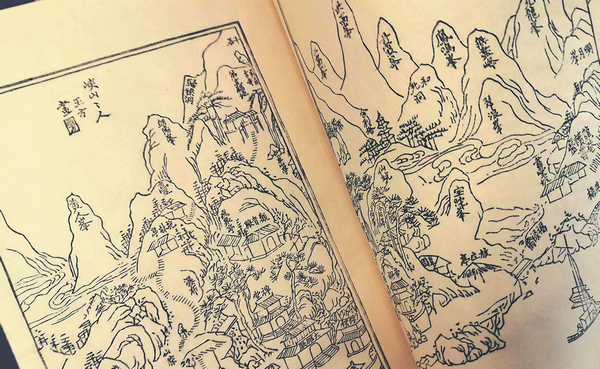

Afterward, they're dried in the shade for a month before they're resized and reshaped.
Then, a light layer of paste is slathered on the dry blocks before pieces of thin paper with written characters or sketched images are placed atop the area that will be engraved once the adhesive dries.
Brushstrokes are specially executed to enable precision cutting of the blocks to ensure every character is clear and graceful.
Images are the trickiest, Chen explains.
"The wood grain runs horizontally. So, when carving the expression in a person's eyes, for example, you have to pick a place to etch vertical lines, so the eyes appear particularly dark when printed to make them vivid and lively," he says.
"The lines must be smooth to present the face, the hands and even the motion of the fingers."
A craftsperson may only be able to carve a dozen characters a day, and a 100-page book could take an experienced artist a year or two to finish.